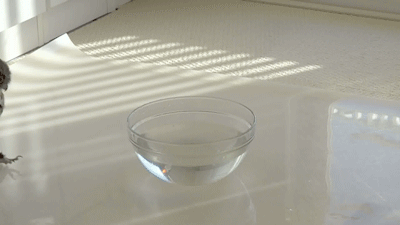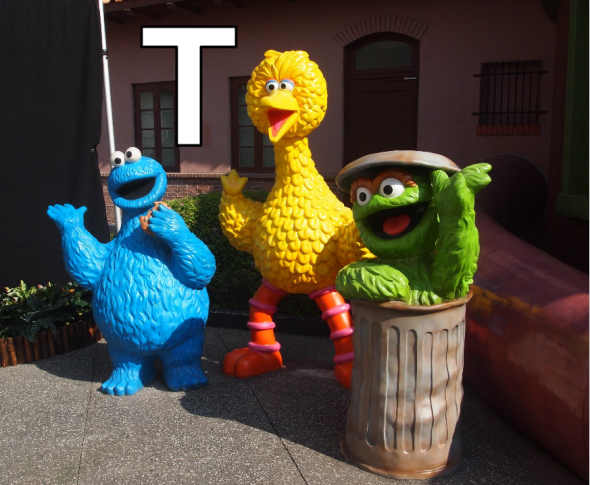To the untrained ear, the letter t would seem pretty straightforward. Except for the embarrassment of pronouncing an occasional silent one—when, say, you chanced to read buffet or croquet before hearing them aloud—you probably haven’t thought much about t since the days of Sesame Street. As a consonant, after all, t isn’t like those slippery vowels, which can stand for some half dozen sounds apiece, and even when it’s joined by h to make a new sound (well, two), “th” still feels satisfyingly consistent. But what if I told you there were fully five different sounds that t can make in English, depending on which dialect you speak?

Posted by lemonyanemone on Tumblr
This “Free Tudoring” ad is a cheeky demonstration that, if you say them at normal speed, “tutor” and “Tudor” sound the same. So do other pairs, like “latter” and “ladder.” What’s going on?
In order to make a t or a d, your tongue needs to raise up and touch the roof of your mouth behind your teeth, briefly stopping up the flow of air coming out. The difference—normally—is that for a d, you’re also vibrating your vocal cords at the same time (if you put your hand on your throat, you can feel it buzzing), while for a t you aren’t. On the other hand, you always vibrate your vocal cords to make a vowel sound. That’s just how vowels work. So when you have a t or d in between two vowels, and you’re talking at a relaxed, slurred-together pace, it’s easier to just pronounce them both using a quick tap of your tongue and not even pause that vocal cord vibration for a split second. Which makes t and d—at least when they’re in the middle of a word, between vowels—sound identical.
In fact, this quick, d-like version of t is one of the hallmarks of North American English—you’ll find Brits exaggeratedly pronouncing “wadder” for “water” when imitating us, and if you want to be adept at doing a British accent, it’s one of the first things you’ll need to undo from your own speech.
There is, however, a second kind of t in the middle of some words, one that barely sounds like a t at all. That’s the t in “button” (or “bottle” if pronounced with a Cockney accent). If you notice, you aren’t touching your tongue to the roof of your mouth at all. Instead, you’re making a brief constriction at the back of your throat, the same way you make a brief pause in the middle of “uh-oh,” but it gets heard as a t because that’s what you’re expecting.
On to some other t’s. What’s in the following gif?

Found with the caption “A Moist Owlet” on Reddit, Imgur, and Tumblr.
Well, if you’re like the unknown internet humorist who has since been liked and reposted thousands of times, you may have said a moist owlet, a pun on that travelling necessity, the moist towelette. “Moist owlet” and “moist towelette” clearly sound similar enough for the wordplay, but in actual speech, they wouldn’t be confused. Why?
The answer lies in the difference between t at the end of a word and t at the beginning. We’ve already noticed that making a t means that you hold a bit of air behind your tongue at the roof of your mouth, but what happens when you let it go? There are two extremes: You can either let it go with a big, breathy puff of air or relax your tongue subtly, without much sound at all.
Try saying “moist towelette” with your hand in front of your mouth. Which t do you produce a gust of air with and which do you barely pronounce? If you’re like most people, speaking at a natural rate, you’ll end up with hardly any t sound when it’s at the end of a word, and a distinct puff of air when it’s at the beginning. That’s how you can tell the difference between a moist owlet and a moist towelette: The second one comes with an extra puff of air.
Another way to hear the difference between various t sounds is to compare “hottie” to “hot tea.” If you say them slowly and artificially, like a computer, they sound almost identical, but if you say them more naturally, you can hear a difference easily enough. The between-vowels t in hottie gets the quick, d-like tap, while the word-final t in hot gets a subtle release and the word-initial t in tea gets a breathy one.
Now, if you’ve been minding your p’s and, well, t’s, you’ll note that I’ve only mentioned four types of t so far. So what’s the fifth? It’s actually just the plain vanilla t, no bells or whistles. But where the heck do we actually use regular old t, if it’s not in tutor or moist or towel or hottie? Among other places, it’s reliably found after s, as in stay. Try it out: The tongue is solidly on the roof of your mouth, the release is neither very big nor particularly small, and there’s nothing d-like about it.
Garden-variety t is also sometimes found in the middle of a word, when it’s got a consonant on one side, as in magenta. But that can be tricky: If that middle-of-a-word t is stressed, as in participant (par-TIS-si-pant), then it gets a puff of air just like at the beginning of a word.
Why do we have all these variations of t? Well, it’s one part speaking efficiently, one part hearing efficiently, and a good dose of happenstance. Speaking-wise, it’s just easier to produce a t that’s more like its neighbors, regardless of whether those neighbors are vowels on either side or silence, as at the end of a word. Hearing-wise, it’s useful to have cues like that puff of air that tell us when we’re likely at the beginning or end of a word, since words don’t come into your ears with convenient white spaces around them. And sometimes language just is, for no particular reason. After all, other languages and dialects manage just fine with a whole different set of t’s.
